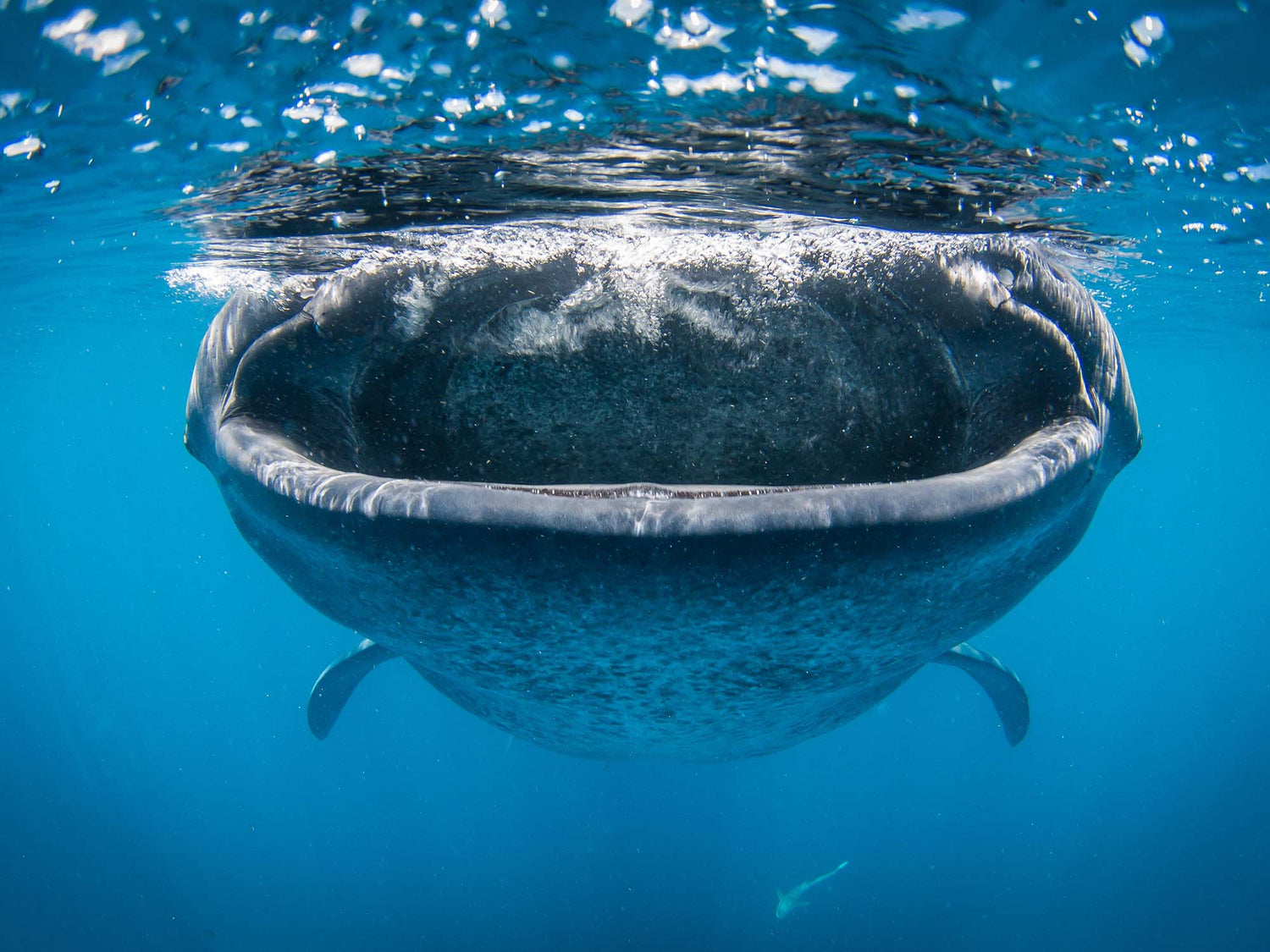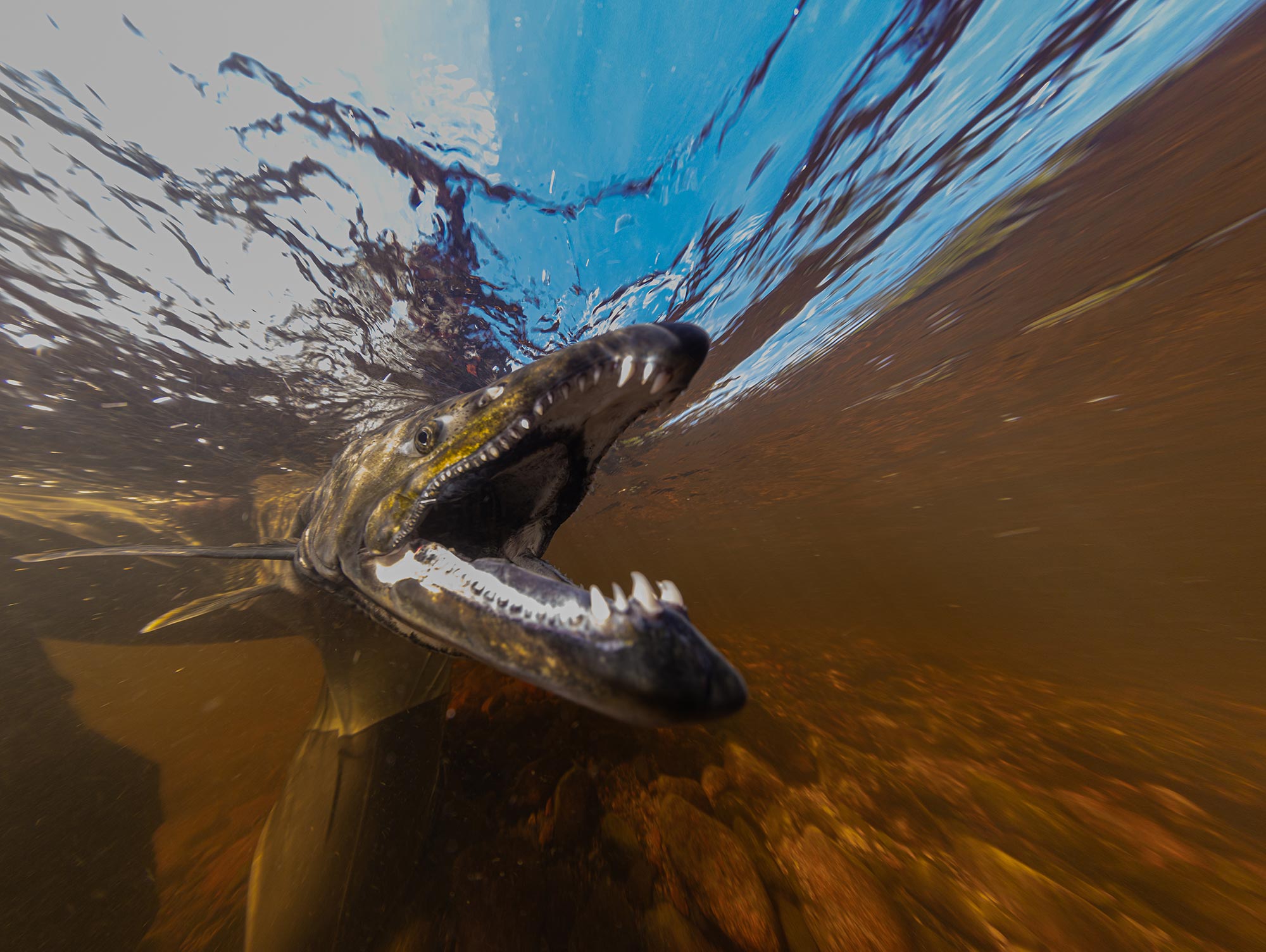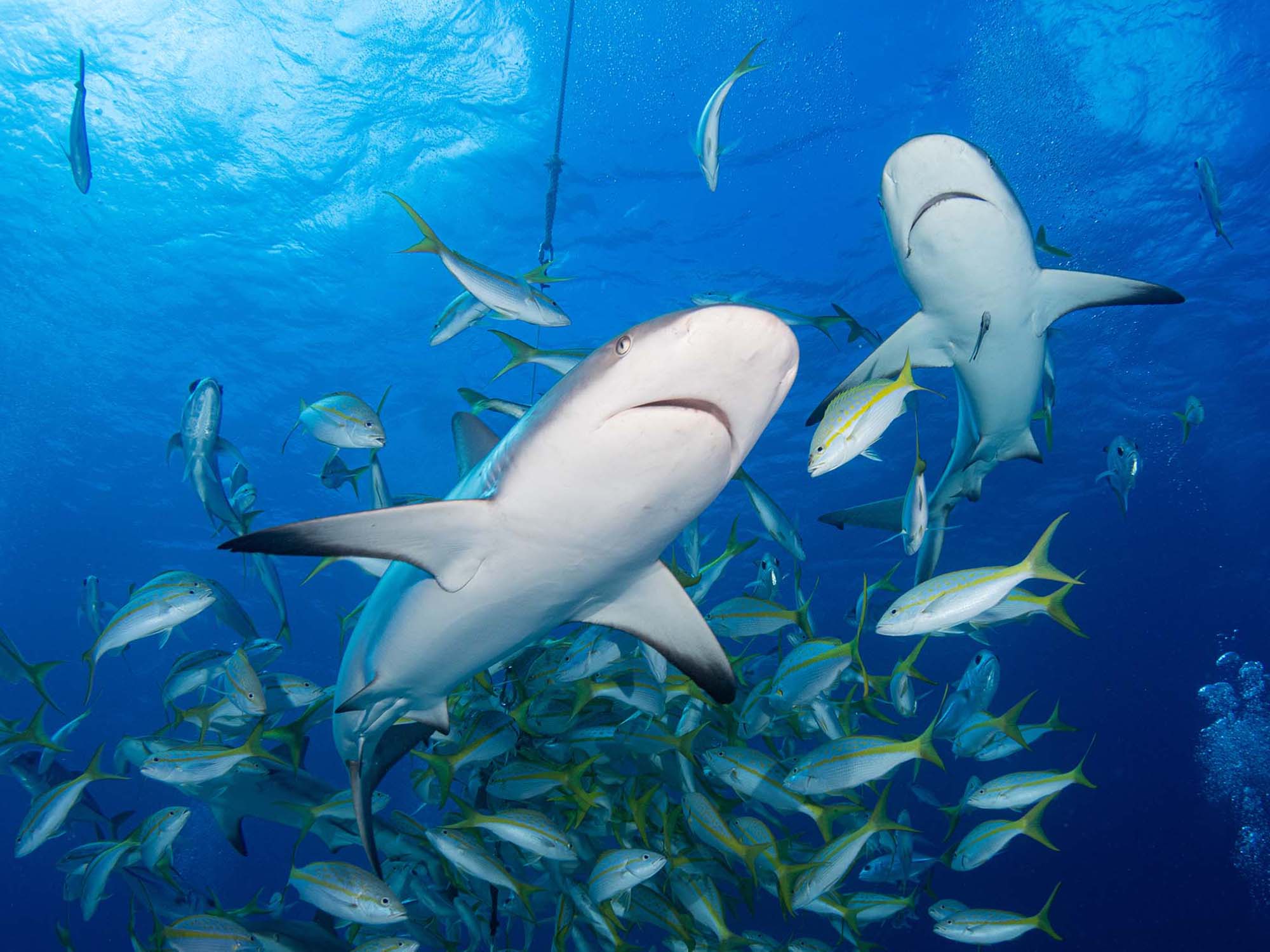We almost universally recommend using strobes to help you achieve the best clarity and color in your underwater images. But, there are certain dive sites and/or underwater animals where flash and underwater lighting is strictly prohibited or certain situations where you may prefer to leave your strobes at home. In these situations, it's good to know what camera settings and techniques will help you make the most of natural light for your underwater images.
Where
Any body of water, as long as there is clarity and good visibility. Many of the techniques we employ using flash, like getting very close to your subject, are designed to make the water look clearer. The clearer the water, the more success you will have with natural light.

Grabbing shots like this takes repetition. The lower half will be very dark when you expose the sky properly. If you blow out the surface by favoring the exposure of the under, there won't be any sky to recover. Expect your RAW images to disappoint you and use Lightroom's darks sliders and gradient filters to correct. © Steve Miller
DSLR + Mirrorless
ISO: 200-400.
Mode: Manual. Though there is no shame in shooting Program, AV, or TV mode here, manual is preferred for the most control. The tonal range in a natural light image can fool the light meter sometimes.
Aperture: F-8 is a natural place to start. Since you are probably shooting at things farther away than normal, and using a semi wide or super wide lens, depth of field is not a big concern.
Shutter Speed: 1/125th and up. If you are shooting light rays, and they are dancing very quickly, a fast shutter will freeze them.
Lens: 8mm-35mm. Super wide lenses are always desired, but with good visibility you can use longer lenses, up to 35mm or so.

A good composition will be your best friend with natural light. Look for framing and edge lighting opportunities to capture contrast. © Steve Miller
Point + Shoot
If you have exceptional visibility, this type of photography can be accomplished with a point and shoot camera very well. Make the most of minimal drag and get creative.
ISO: 100 to 200.
Mode: Manual or Aperture Priority, Program will work well here too.
Aperture: Full range depending on sun in your frame.
Shutter Speed: 1/125 to 1/200.
Lens: Full wide angle with or without a wide angle wet lens.

Just because there's no artificial light employed doesn't mean the sun won't produce interesting light and shadow. Look for contrast and be careful not to overexpose.
Technique
Your first thought should be to make sure the sun is not blowing out (over exposing) your scene. Your other first thought should be composition, the way the shapes in your image relate to each other. Make sure you're shooting in RAW when shooting natural light so you can give yourself a good opportunity to adjust your images in post as needed.
Pro tip
Look for contrast: dark suited divers against white sand, dive boats blocking the sun, frames created by the strata around to draw the viewer's eye through the scene. Contrast is your friend, and haze is your enemy, this is one reason black and white conversions and sharpness and contrast sliders are popular for finishing your images.

When shooting natural light, the position of the sun is a major influence. Use it to your favor. © Steve Miller
Additional Reading
Natural Light Photography Underwater
Snell's Window: A Wide Angle Photography Effect
Whale Shark Photography Underwater Camera Settings
5 Situations Where You Need a Strobe Underwater [VIDEO]
Streaming Light Rays Underwater Camera Settings













